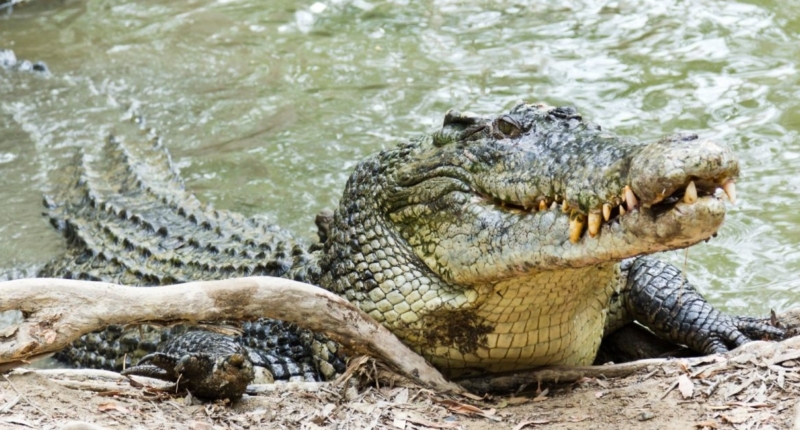Bite force varies widely across the animal kingdom, with multiple factors playing a role in determining an animal’s bite force. The T. rex had a powerful bite force of up to 35,000 newtons, while the Galapagos large ground finch has the most intense bite force for its size, capable of cracking tough nuts and seeds with a force of 70 newtons. Humans, on the other hand, have a relatively weak bite force, with the strongest recorded bite force of around 1,000 newtons. Bite force can be measured directly or estimated indirectly, and for extinct animals, computer simulations are used to recreate jaw muscles that have long since decomposed. Body size is the most important factor in determining bite force, overwhelming all other factors, including head width and prey toughness.
The Strongest Bite Forces in the Animal Kingdom
When it comes to bite force, some of the most well-known extinct and living predators are not necessarily the ones with the strongest bites. Bite force refers to the amount of force generated by the muscles and bones of an animal’s upper and lower jaw when biting. Those with powerful bites can easily take down struggling prey, even breaking through tough armor.
According to a study published in Frontiers, the saltwater crocodile (Crocodylus porosus) has the strongest known bite force of any animal alive today, measured at 16,460 newtons. For reference, one newton equals approximately a quarter of a pound of force. The strength of the crocodile’s bite is attributed to its powerful jaw muscles, which allow it to exert extreme force on its prey.
Although not yet measured in a live setting, there are two aquatic predators that could potentially challenge the crocodile’s bite force. The first is the orca (Orcinus orca), which has an estimated bite force of 84,516 newtons according to the Dutch Shark Society. In comparison, the bite force of a great white shark (Carcharodon carcharias) is estimated to be around 18,000 newtons according to computer models used in a 2008 study published in the Journal of Zoology.
While the saltwater crocodile currently holds the title for the strongest bite force, the orca and great white shark could potentially surpass it if their bite forces were measured in a live setting. Nevertheless, the crocodile’s bite is still an incredibly powerful and deadly force in the animal kingdom.
Comparing the Bite Forces of Extinct Predators
The extinct predators T. rex and megalodon are well-known for their ferocious bites. While scientists estimate that T. rex had a bite force of 35,000 newtons, megalodon’s bite force was up to 182,200 newtons, according to a study published in the Journal of Zoology. However, it’s difficult to directly compare the two because their jaws had different types and numbers of teeth.
Bite Force: Direct and Indirect Measurement
Living animals can bite down on a force gauge to measure their bite force, but for those that can’t be tested this way, scientists use indirect methods based on what is known about their body structure, shape, and prey type. Bite force in extinct animals can be trickier because only the jaw bones remain in a skull. Researchers use computer simulations to recreate jaw muscles that have long since decomposed.
What Goes into a Crushing Bite?
A powerful bite force requires multiple characteristics, including head and jaw strength, as well as teeth that are like weapons. However, according to Daniel Huber, a professor and chair of environmental studies at The University of Tampa, body size is the most important factor. Huber found that a predator’s size dominates everything else, including head width and prey toughness. The jaw adductor muscles, which are responsible for closing the jawbones, are crucial, and their sizes and positions can be evolutionarily tweaked to maximize the amount of muscle force that can be transmitted into bite force.
Bite Forces Across the Animal Kingdom
Bite force in animals can vary widely and depends on multiple factors, including head and jaw strength, tooth shape and sharpness, and body size. Among extinct animals, the T. rex is known for its powerful jaws, estimated to have a bite force of up to 35,000 newtons, according to computer simulations. When factoring in the sharpness of its teeth, the bite force increases significantly.
Not all animals with a strong bite force are large predators. The Galapagos large ground finch has the most powerful bite force for its body size, capable of cracking tough nuts and seeds with a force of 70 newtons, according to a 2019 study published in Proceedings of the Royal Society B. In comparison, the T. rex has a bite force that is 320 times stronger than that of the finch.
Humans, on the other hand, have a comparatively weak bite force, with the strongest recorded bite force of around 1,000 newtons. This puts us far below many animals in the animal kingdom in terms of bite force strength.
Don’t miss interesting posts on Famousbio










